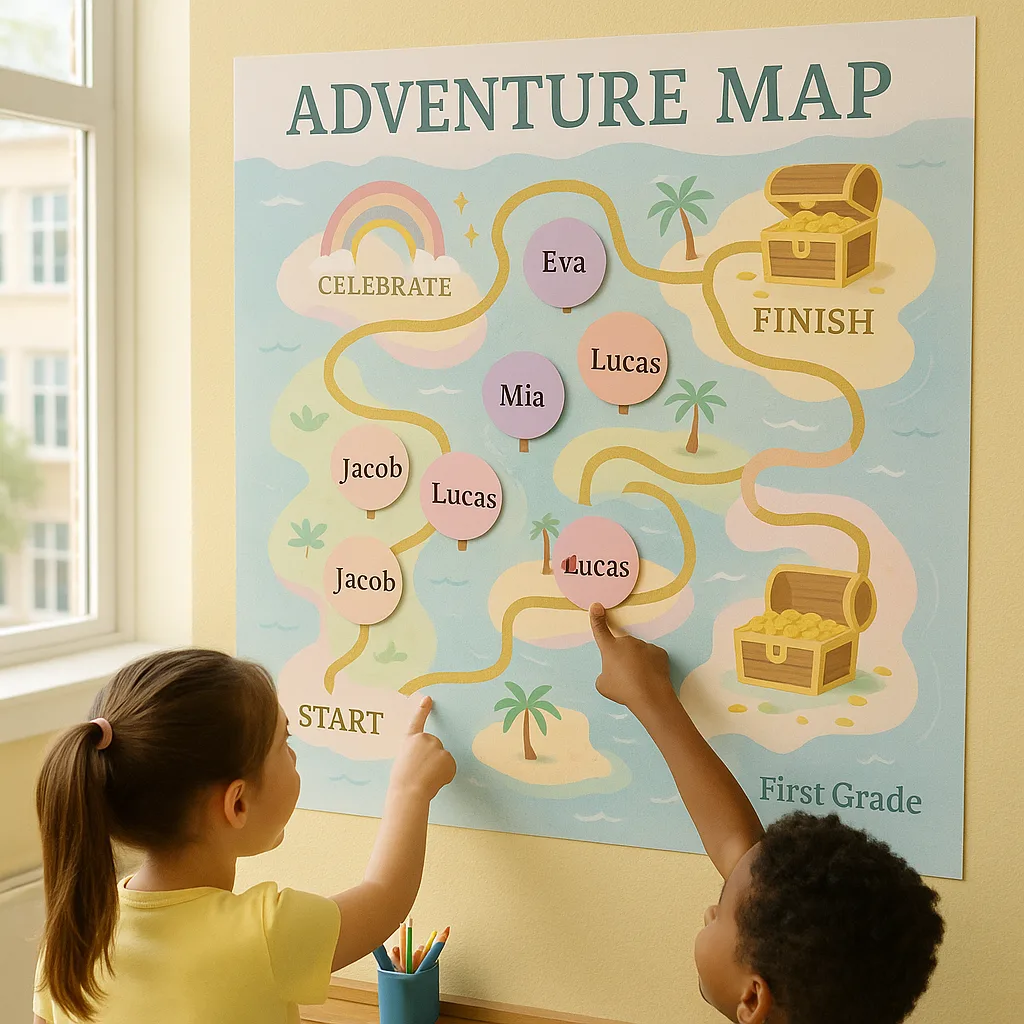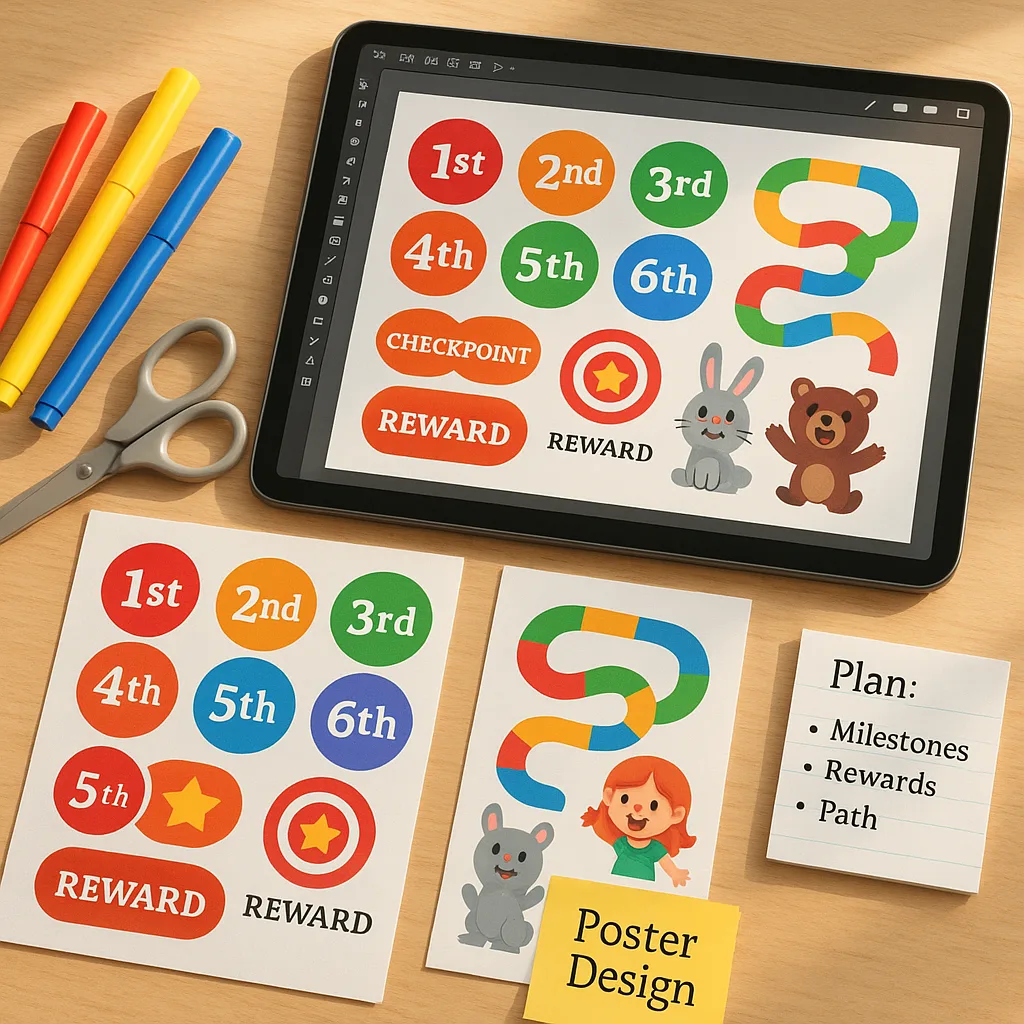Classroom Poster Maker for Attendance Maps
Why Visual Attendance Tracking Works Magic
After struggling with traditional attendance methods during my first few months of teaching, I discovered something amazing. When children can see their progress visually represented, they become intrinsically motivated to participate. Therefore, implementing a poster-based attendance system wasn’t just about tracking who’s present – it became about building a sense of belonging and achievement.
Research backs this up too. Visual learning aids improve retention by up to 400%, according to educational studies. Moreover, when students actively engage with their attendance tracking, they develop a stronger connection to their classroom community. For instance, one of my students who previously had chronic tardiness now arrives early just to move her marker along our adventure path!
Creating these engaging visual systems doesn’t require artistic expertise. With a poster printing machine, I can design and print professional-quality attendance maps that rival anything from educational supply stores. Best of all, I can customize them to match our current learning themes and my students’ interests.
Designing Your Adventure Path
The beauty of using a classroom poster maker lies in the flexibility it provides. Unlike pre-made charts, I can create paths that wind through environments my students are currently studying. During our weather unit, our attendance journey traveled through different climate zones. Each perfect attendance week moved students to a new weather pattern!
Color psychology plays a crucial role in design effectiveness. Bright, warm colors like oranges and yellows create energy and enthusiasm. Cool blues and greens promote calm focus. I alternate these strategically along the path to maintain visual interest without overwhelming young eyes.
Furthermore, incorporating student input transforms the map from my project into our project. Before printing the final version, I show my class the draft design. Their suggestions often improve the concept significantly. One student suggested adding “rest stops” for when classmates are sick – a brilliant idea that promotes empathy alongside attendance goals.
Implementing Reward Checkpoints
Strategic checkpoint placement keeps momentum strong throughout the journey. I’ve learned that first graders need more frequent rewards than older students. Therefore, I place mini-checkpoints every three days initially, gradually spacing them out as the year progresses.
Each checkpoint offers different types of rewards to appeal to various motivations. Some students love public recognition, while others prefer quiet privileges. By varying reward types, every child finds something personally meaningful. Examples include:
• Extra computer time
• First choice at learning centers
• Special helper roles
• Lunch with the teacher
• Classroom job selection priority
• Extra library book checkout
The visual representation matters as much as the reward itself. Using a poster printing machine, I create vibrant checkpoint markers featuring beloved characters or themes. These eye-catching visuals remind students daily of their progress and upcoming goals.
Celebration Stations: Making Success Visible
Celebration stations serve as visual reminders of what students can achieve through consistent attendance. I design these as colorful destination points along our journey map, each representing different levels of accomplishment. The anticipation builds naturally as students see these exciting endpoints from day one.
Creating multi-sensory celebration experiences amplifies the impact. When students reach major milestones, we don’t just mark it on the map – we celebrate with special activities. For instance, reaching “Attendance Island” might trigger a tropical-themed afternoon with beach music and pineapple snacks. These memorable moments reinforce the value of regular attendance far more effectively than lectures about its importance.
Furthermore, I use our classroom poster maker to create certificates and badges students can take home. These tangible rewards extend the celebration beyond our classroom walls. Parents often share how proudly their children display these achievements, creating positive reinforcement at home too.
Troubleshooting Common Challenges
Every classroom faces unique attendance challenges, but visual systems provide flexible solutions. When students face legitimate absences due to illness, I’ve created “healing stations” on our map where their marker rests until they return. This acknowledges their absence without penalizing them for circumstances beyond their control.
For students with chronic attendance issues, I work with families to create modified journey maps with more achievable goals. Small victories build confidence and momentum. One student who initially couldn’t manage full weeks now proudly maintains three-day streaks, gradually building toward longer goals.
Technical considerations also matter. Using high-quality materials from proper paper and media types ensures maps withstand daily handling by enthusiastic first-grade hands. Lamination adds durability while creating a surface where we can use dry-erase markers for temporary notations.
Measuring Success Beyond Numbers
While improved attendance rates provide concrete data, the true success of visual attendance maps appears in less quantifiable ways. I notice increased morning enthusiasm, stronger peer relationships, and improved classroom community cohesion. Students take ownership of their attendance in ways that surprised me initially.
Parent feedback has been overwhelmingly positive. One mother shared that her daughter now sets her own alarm clock to ensure she doesn’t miss moving her marker. Another family started their own home version to track chores and homework completion. These ripple effects demonstrate how visual systems can transform behavior patterns.
Additionally, the creative process itself builds valuable skills. When students help design journey themes or suggest checkpoint rewards, they practice planning, visualization, and goal-setting. These executive function skills serve them well beyond attendance tracking.


